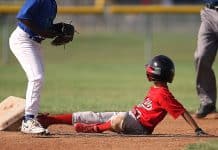So you’ve decided to pick up a new sport, or perhaps you’re just looking to upgrade your gear. Whatever the reason, one question remains: how do you tell what cleats are for what sport? With so many options out there, it can be overwhelming to figure out which pair is meant for soccer, which is for football, and which is for baseball. Fear not, my friend, for in this article we will guide you through the intricacies of sports cleats, ensuring that you make the right choice for your game.
Materials and Design
When it comes to sports footwear, the materials and design are crucial factors in determining the performance and functionality of the cleats. Cleats are specially designed shoes with studs or spikes on the outsole, which provide traction and stability on various playing surfaces. Different sports require specific designs and materials to cater to the unique demands of each game. Let’s explore some of the key aspects of cleat construction and design for different sports.
Football Cleats
Football cleats are designed to provide optimal traction and stability on the football field, which can often be slippery and uneven. The stud patterns play a vital role in determining the grip and maneuverability. Football cleats usually have a combination of molded or interchangeable studs that are strategically placed to provide traction during quick directional changes and explosive movements. Additionally, football cleats often feature high ankle support to protect against ankle sprains and provide stability, especially in positions that involve frequent cutting and lateral movements.
Soccer Cleats
Soccer cleats are designed with a focus on ball control and agility. The flat outsole of soccer cleats allows for better contact with the ball, enhancing players’ ability to manipulate and control it. The low-cut design of soccer cleats enables agile movements, including quick changes in direction and sudden stops. This design feature allows players to maintain optimal balance and control while dribbling, shooting, or passing the ball.
Baseball Cleats
Baseball cleats are designed for optimal performance on the baseball diamond, where players need to react quickly and exert significant force during movements. Depending on the playing surface, baseball cleats may feature either metal or molded cleats. Metal cleats offer exceptional grip and traction on dirt or grass, while molded cleats provide more versatility and can be used on a variety of surfaces. In addition to the typical stud patterns, baseball cleats often have a toe cleat, which improves traction during acceleration and quick turns.
Basketball Sneakers
Basketball sneakers are designed to provide stability, comfort, and traction on indoor courts. The outsole of basketball sneakers features traction patterns that enable quick stops, starts, and changes of direction. The patterns vary to accommodate different playing styles and court conditions. The midsole of basketball sneakers is also an essential component, as it provides cushioning and impact absorption to protect the player’s feet and joints from the high-impact movements involved in the game.
Track Spikes
Track spikes are incredibly lightweight and designed for speed and traction on the track. The materials used in their construction are chosen to minimize weight and maximize energy transfer. The spike length can vary depending on the track surface, with shorter spikes ideal for harder tracks and longer spikes suited for softer tracks. The spike configuration and placement on the outsole are carefully designed to provide the necessary grip while minimizing drag for optimal performance.
Golf Shoes
Golf shoes are designed to offer stability, traction, and comfort during a golf swing. They come in two main types: spiked and spikeless. Spiked golf shoes feature removable cleats or spikes on the outsole to provide exceptional grip on the grass and prevent slipping during the swing. Spikeless golf shoes, on the other hand, have a specialized traction pattern built into the outsole, making them more versatile and suitable for various terrains. Golf shoes also often come with waterproof materials to ensure all-weather play and keep the player’s feet dry and comfortable on damp mornings or rainy rounds.
Cycling Shoes
Cycling shoes are specifically designed to maximize power transfer from the cyclist’s legs to the pedals. The soles of cycling shoes are typically rigid to prevent energy loss through flexion, allowing for efficient power transfer. Additionally, cycling shoes have a specialized cleat attachment system that allows riders to engage their shoes with the pedals, increasing efficiency and stability during the pedaling motion. The combination of the rigid sole and cleat attachment system provides the necessary support and control for optimum performance on the road or mountain bike.
Hiking Boots
Hiking boots are designed to withstand the challenges of rugged terrains and provide the necessary protection and traction for outdoor exploration. They are constructed with durable and rugged materials to withstand the wear and tear of rough landscapes. The outsole of hiking boots features lug patterns, which are deep and aggressive treads that provide excellent grip on varied terrain such as rocks, mud, and uneven surfaces. Additionally, hiking boots may have reinforced toe caps and ankle support to protect against impacts and prevent injuries while navigating challenging trails.
Lacrosse Cleats
Lacrosse cleats are built to meet the demands of the fast-paced and physically demanding game. They feature multidirectional traction patterns on the outsole to enable quick cuts and changes of direction. The design focuses on providing sufficient grip during lateral movements, allowing players to maintain balance and agility. Lacrosse cleats also often come with ankle support features, such as high ankle collars or specialized cushioning, to protect against ankle injuries, which are common in the sport due to the quick accelerations and sudden stops involved.
In conclusion, cleats are designed and constructed with specific sports in mind to maximize performance, stability, and traction on different playing surfaces. The materials, design features, and stud patterns are carefully chosen to cater to the unique demands of each sport. Whether you’re a football player needing traction for quick cuts or a golfer requiring stability during a swing, choosing the right cleats can significantly impact your performance and enjoyment of the game. So next time you step onto the field, court, or track, make sure you’re wearing the appropriate cleats for your chosen sport – your feet will thank you for it!





































